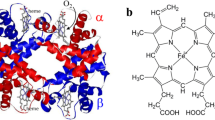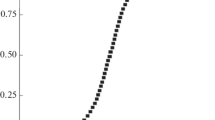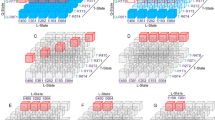Abstract.
While most researchers agree on the global features of cooperative ligand binding to haemoglobin (Hb), the internal mechanisms remain open to debate. This is not due to inaccurate measurements, but is rather a consequence of the cooperative ligand binding that decreases the equilibrium populations of the partially liganded states and makes observation of the transitions between these substates more difficult. For example, the equilibrium population of the doubly liganded tetramers is typically less than 5% of the total Hb. As a result many models with widely varying mechanisms may fit the oxygen equilibrium curve, but may not be consistent with observations of other parameters, such as ligand-binding kinetics or subunit association equilibria. The wide range of methods and models has led to divergent conclusions about the properties of specific substates. One notable debate concerns the properties of the doubly liganded forms. The simple two-state model predicts a shift in the allosteric equilibrium based on the number of ligands bound, but not on their distribution within the tetramer. From studies of dimer-tetramer equilibria of various pure and hybrid forms, it was concluded that a tetramer with two ligands bound on the same α β dimer (species 21, an asymmetric hybrid) shows an enhanced tetramer stability, similar to singly liganded Hb, relative to the other three types of doubly liganded tetramers which resemble the triply liganded forms [Ackers et al. (1992), Science 255: 54–63]. The implications of this model and the relevant experiments will be reviewed here.
Similar content being viewed by others
Author information
Authors and Affiliations
Additional information
Received 27 April 1998; received after revision 17 July 1998; accepted 10 August 1998
Rights and permissions
About this article
Cite this article
Marden, M., Kiger, L., Poyart, C. et al. Identifying the conformational state of bi-liganded haemoglobin. CMLS, Cell. Mol. Life Sci. 54, 1365–1384 (1998). https://doi.org/10.1007/s000180050260
Issue Date:
DOI: https://doi.org/10.1007/s000180050260




